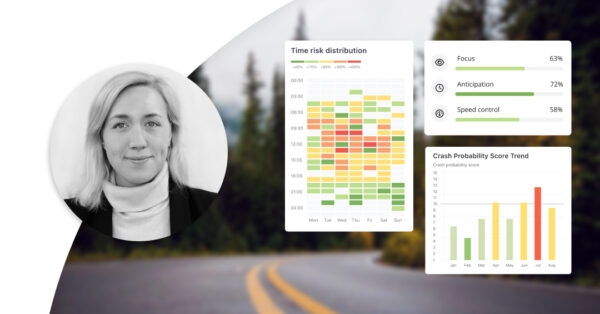
Using your existing driving data to comply with CSRD

The European Union’s Corporate Sustainability Reporting Directive (CSRD) has transformed the landscape of Environmental, Social & Governance (ESG) reporting.
The CSRD impacts more companies than any other ESG regulation to date. And it broadens the scope of ESG reporting, meaning that more data is required about a company’s impact on the planet.
As a result, demand for quality, transparent, audit-ready mobility data is soaring. But, confusion remains about exactly what data is needed, and how to access it. Here’s a quick guide to using your existing GPS driving data to comply with CSRD.
CRSD – a summary
Similar to financial reporting, the CSRD requires certain companies to report information relating to environmental and social factors. This includes how these factors impact on the company’s own performance AND how the company itself impacts on the planet. This is known as “double materiality”.
Not just that but, under CSRD, companies must also include information relating to their value chain. That is, the full chain of activities relating to a company’s operations, from transport of materials TO them and their delivery of goods to the market.
CSRD is already in force, applicable to the 2024 financial year. This means that the first CSRD reports will be published in 2025, starting with large enterprise companies.
Is my company impacted by CSRD?
It is estimated that around 50,000 companies worldwide are required, by law, to report under the CSRD. This includes large companies and listed SMEs. However, the very nature of CSRD means that other companies, not directly in scope, will see increased pressure to publish information in line with CSRD.
For transport companies, the reporting of environmental and social factors is particularly relevant. That’s because they might be indirectly affected by CSRD, or other requirements such as the Corporate Sustainability Due Diligence Directive (CSDDD) in global supply chains. The result is that larger organizations might require the transport companies in their value chains to share their ESG data.
What exactly needs to be reported under CSRD?
Under CSRD, companies must report according to European Sustainability Reporting Standards (ESRS). The standards fall under the three areas of:
Environmental: Climate change, pollution, water and marine sources, biodiversity and ecosystems, resource and circular economy.
Social: Own workforce, workers in the value chain, affected communities, consumers and end users.
Governance: Governance, risk management, and internal control; business conduct.
Utilizing your existing data to fulfil CSRD requirements
At Greater Than, we enable you to easily uncover driver impact data to fulfil the mobility requirements of CSRD. We do this by using artificial intelligence (AI) to convert your existing GPS driving data (from a telematics system, connected car, app, etc.) into climate impact and crash probability. This addresses the environmental and social factors of ESG reporting.
It’s important to note that, under CSRD, companies must set clear ESG targets and annually publish their progress. Our ESG solutions enable you to measure your impact on the planet today, set targets and act for reduction, and report on progress.
Example data that can be obtained for CSRD reporting
Thanks to the uniqueness of our scoring, our AI harmonizes data regardless of location or vehicle type, making it easy for organizations to benchmark performance across mixed fleets and quickly pinpoint areas for potential CO2 emissions reductions and driver safety improvements.
We can calculate GHG emissions across Scopes 1, 2, and 3, identify savings and areas for improvement, and compile ready-made reports. In terms of climate impact, we help organizations to understand:
- Climate impact as a score, % or in absolute grams
- Their own results vs benchmarks
- Efficiency per mile/km
- Opportunities for improvement
We also predict crash probability at fleet and driver level, helping organizations to take greater control of driver safety. Our data enables organizations to see:
- Driver risk as a 1-15 score
- Their own results vs benchmarks
- Safety per mile/km
- Opportunities for improvement
Accessing the data you need to get started with CSRD reporting
It couldn’t be easier to get started. If you’re a telematics provider, fleet management company, insurer, or other mobility firm, you can start sharing your GPS data with us right away. If you’re a connected fleet, we can work with your solution provider to add ESG reporting into your existing system.
Check out our ESG compliance package to discover more, or contact us to discuss your CSRD reporting requirements.



